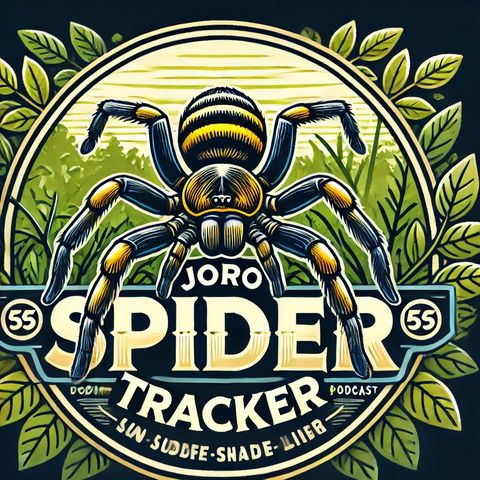Captivating Joro Spiders: Adapting Beyond Their Native Range

Sign up for free
Listen to this episode and many more. Enjoy the best podcasts on Spreaker!
Download and listen anywhere
Download your favorite episodes and enjoy them, wherever you are! Sign up or log in now to access offline listening.
Description
The Joro spider, a type of golden orb-weaver scientifically known as Trichonephila clavata, has been garnering attention due to its expanding presence beyond its native range. Originally from East Asia,...
show moreJoro spiders are distinguished by their vivid coloration. The females, which are significantly larger than the males, display bright yellow, blue, and red hues on their bodies, making them quite noticeable when contrasted against the greenery in forests and gardens. Their webs can also be massive, sometimes spanning several feet wide, and are known for their resilience and strength.
One noteworthy aspect of the Joro spider is its ability to survive and adapt in environments that are colder than its typical subtropical home. This ability is rather unusual among its kin in the Trichonephila genus and has raised interest among ecologists and biologists regarding its potential impact on local ecosystems. There's been some public concern about whether the spiders could become invasive and negatively affect native species and ecosystems; however, studies suggest that their impact so far has been minimal. These spiders are known to feed on various insects, and their presence might actually help control pest populations.
Despite their formidable size and bright colors, Joro spiders are not harmful to humans. Their venom is not potent enough to have significant effects on human beings, making them mostly a curiosity or a nuisance rather than a threat. Their rapid spread and adaptation strategies also make them a subject of interest in studies on climate change and biological resilience, as they might indicate how species distributions may shift due to changing temperatures and weather patterns.
The continued presence and possible expansion of Joro spiders in new habitats highlight the complex interactions between species and environments, as well as the unpredictable ripple effects of global biodiversity shifts. The current trajectory suggests that Joro spiders could continue to establish themselves in various parts of the U.S., potentially occupying ecological niches that have been left vacant or are simply favourable for their survival and reproduction. This scenario presents a unique opportunity to study adaptation in real time, offering insights into the dynamics of species dispersal and ecosystem changes.
Information
| Author | QP-4 |
| Organization | William Corbin |
| Website | - |
| Tags |
Copyright 2024 - Spreaker Inc. an iHeartMedia Company
